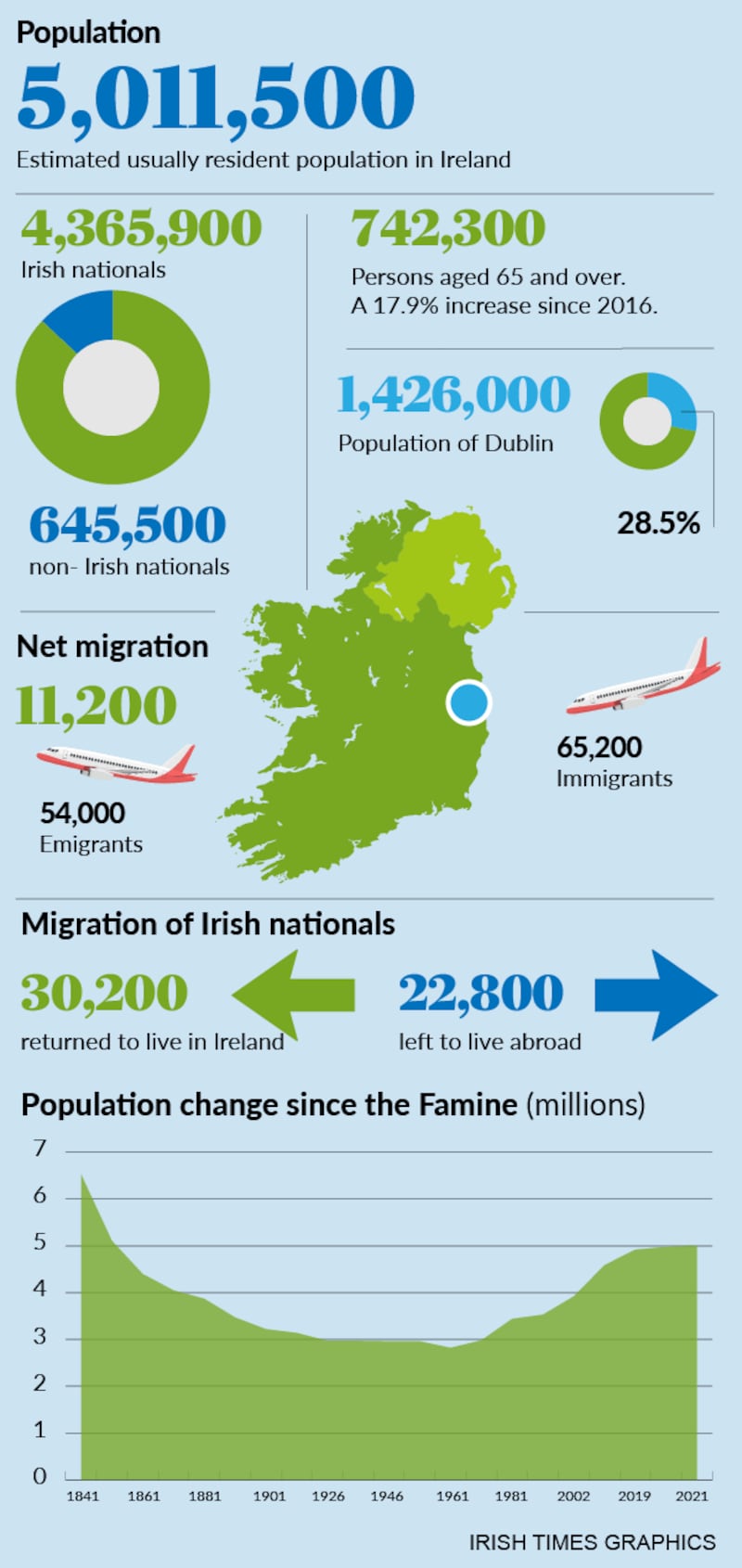The Republic’s population has eclipsed 5 million for the first time since 1851.
The latest figures from the Central Statistics Office (CSO) show the population last April was 5.01 million, up from 4.97 million 12 months earlier.
The CSO said the combination of natural increase and positive net migration gave rise to population growth of 34,000 (0.7 per cent) in the year to April 2021. This was smaller than the 55,900 rise recorded the previous year.
The excess of births over deaths for the 12-month period was 22,800 but this was the lowest level of natural increase recorded since the 2000 population estimates.
Net migration – the difference between the number of people moving to and from the State – also added to the population.

The number of immigrants who came to the State in the year to April was 65,200, down 24 per cent on the previous year, while the number of emigrants who left decreased marginally to 54,000.
These combined flows gave positive net migration of 11,200, compared with 28,900 in the previous year, a decline of 61 per cent.
Both immigration and emigration had been expected to fall as a result of the pandemic and greater restrictions around mobility.
The last time the population was above 5 million was in 1851 when it was 5.11 million. The Republic’s population is measured in a census every five years. In the intervening period, the CSO compiles an annual estimated population figure by tracking births and deaths and migration trends.
While the pick-up in employment and economic conditions from 2015 on spurred a renewed inflow of migrants, the growth in net inward migration has slowed considerably.
The latest figures show Irish nationals accounted for 30,200 (46 per cent) of the 65,200 immigrants to the State, the highest number of returning Irish nationals since 2007. Of the 54,000 emigrants from Ireland, 22,800 (42 per cent ) were estimated to be Irish nationals.
Therefore, the number of Irish nationals who returned here to live was just over 7,300 higher than the number who left to live abroad.
The CSO numbers show there were – as of April this year – 645,500 non-Irish nationals resident in the Republic, about one in eight, or 12.9 per cent, of the total population.
The UK accounted for the biggest level of inward and outward migration. Some 18,200 people left the State to live in the UK over the 12-month period, up from 10,000 the previous year, while 19,100 moved to the State from the UK, up from 15,300 in 2020.
The population of Dublin was estimated to be 1.43 million people, for a 28.5 per cent share of the total population, which was unchanged on the previous year.
In terms of the State’s age profile, more than one in seven people, or 742,300, living in the State were aged 65 or older.
Those aged 65 and over are the only group to gain population share between 2016 and 2021, increasing from 13.3 per cent to 14.8 per cent of the total, this equates to a volume increase of 112,500.
The ageing profile of the Republic’s population has major implications for the health service.
The traditional working age population, those aged 15-64, has grown by about 170,000 since 2016, but this cohort’s population share has declined slightly from 65.5 per cent to 65.3 per cent.










